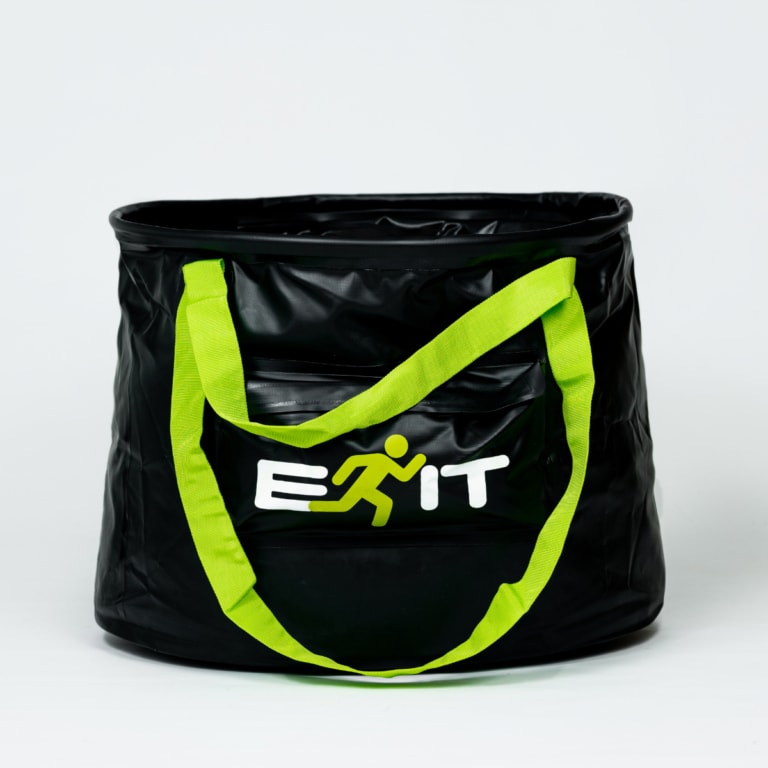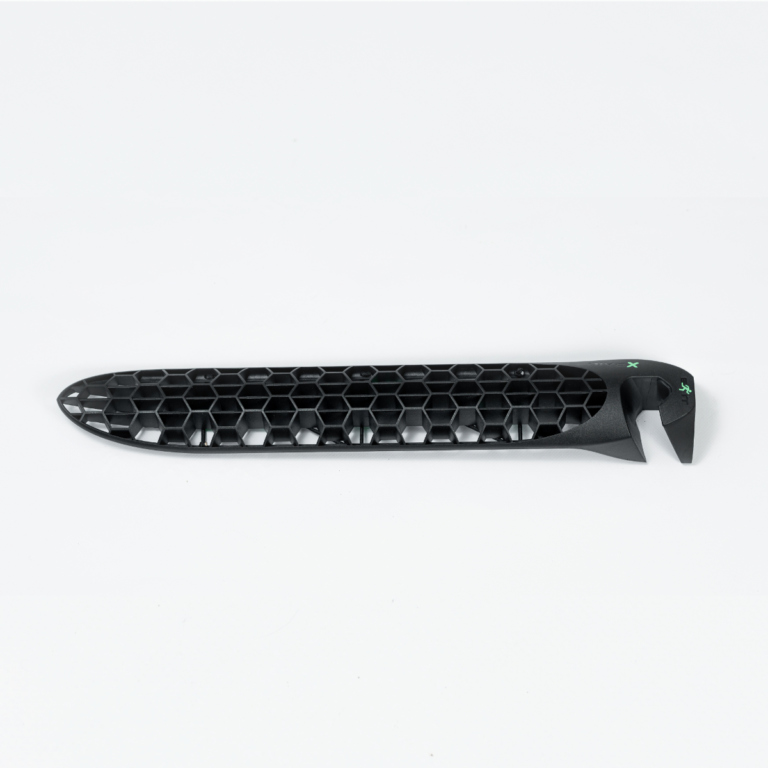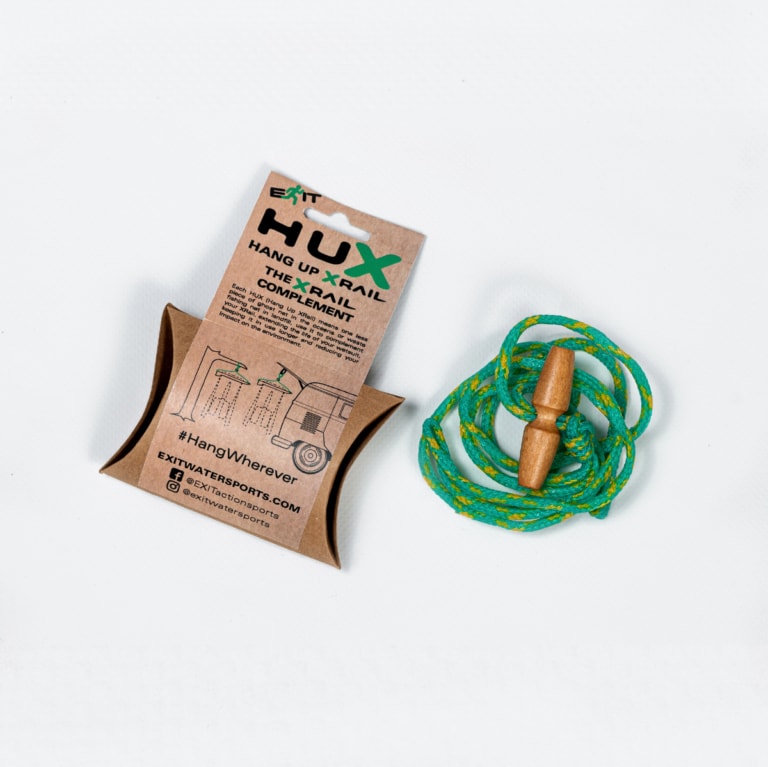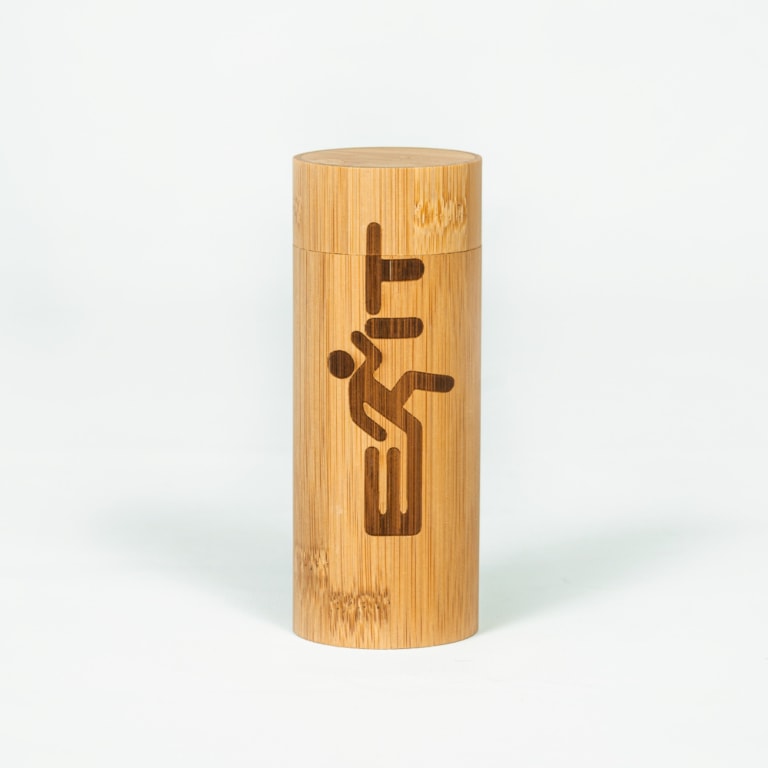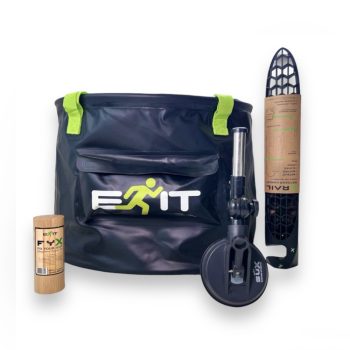Wetsuits aren’t exactly environmentally friendly. Whilst there’s a lot of work being done by some brands who manufacture wetsuits there’s no getting away from their lack of green credentials. In fact, for all its perceived environmental credentials surfing and watersports aren’t that kind to Mother Nature when all is said and done. Wetsuits are often manufactured with petrochemicals. Production of equipment like surfboards also impacts the planet negatively. Here at EXIT, we’re acutely aware of this which is why we try and design products with sustainability in mind.
Topics covered in this article are as follows –
-
Wetsuit change bucket – the BUX!
€49.90 incl. VAT -
XRail Wetsuit Hanger
€34.90 incl. VAT -
Wetsuit hanger accessory the HUX Hang Up 4 the XRail | EXIT watersports
€16.90 incl. VAT -
Wetsuit neoprene repair kit – the FYX
€17.90 incl. VAT -
Wetsuit care Basic Bundle
€76.90 incl. VAT
Wetsuits and looking after your rubber.
Whether surfing, windsurfing, kitesurfing, paddle boarding, kayaking or indulging in other watersports you need rubbery protection. For all watersports enthusiasts, this comes in the form of wetsuits.

Wetsuits can be costly (another reason to make sure they last). But keeping them out of landfill is essential. As a user, it’s your job to give the suit longevity and see that it’s helped to stand the test of time. This is why wetsuit care is so important. Of course, there’s also the performance benefits of looking after your wetty.
How is neoprene made?
Neoprene is generally made by mixing petroleum-based chemicals or oils. The mix then undergoes a polymerization process. During the polymerization process small molecules, called monomers, are formed. They’re a little like building blocks. Monomers are then combined to form larger molecules or macromolecules.
In neoprene manufacturing these molecules are a little like rubbery chips. Which are then melting and a foaming agent is added. The result is a larger piece of what you’d recognise as neoprene. As you can see, whilst certainly clever, it’s not a process that lends itself to being kind to Mother Nature.
How are wetsuits made?
Once a manufacturer has the base neoprene compound they’re turned into ‘buns’ and then sliced into sheets. Additional fabrics and materials are then laminated onto each of these panels. (Adding more material is how to make a wetsuit warmer).
Once the above process is completed panels are cut and tailored to individual sizing. Depending on the price point and performance requirements a variety of stitching, taping and glueing will then be completed. Again, it’s not a particularly environmentally friendly process. So we need to do our bit to offset this carbon footprint.
Are there any environmentally friendly wetsuits available?
Some brands have pushed forward with more environmentally friendly wetsuits. Using natural rubber, this ‘Naturalprene’ is certainly better for the planet. Neoprene-free Yulex is another material used for more eco-friendly wetties.
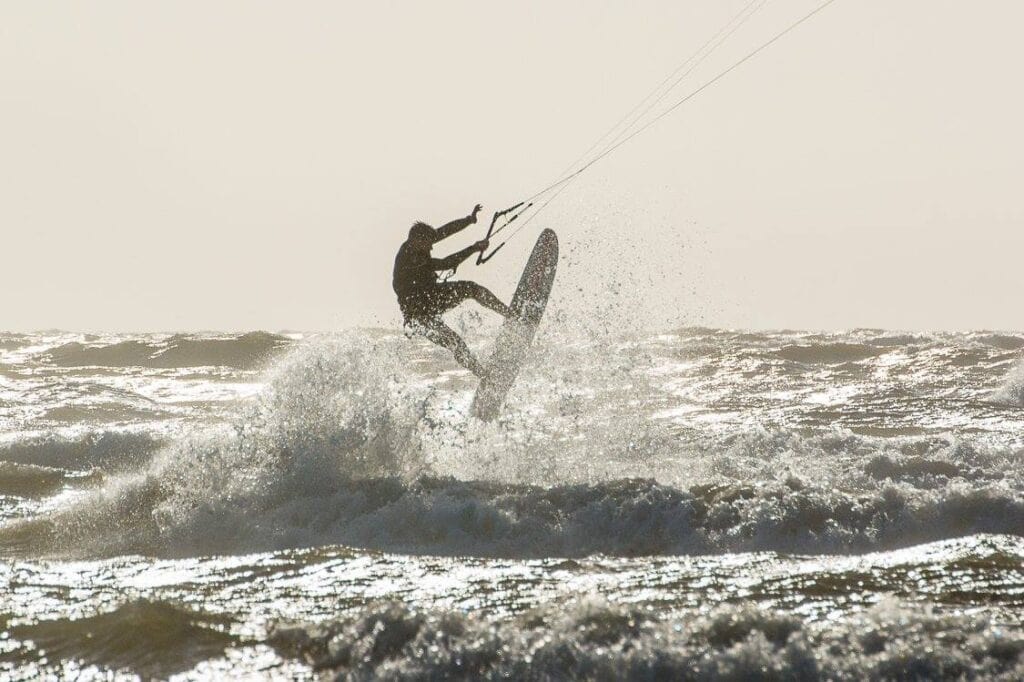
Unfortunately, even with great work being done by some to reduce waste, an estimated 400 tonnes of neoprene end up in landfills every year! Also, the manufacturing process and shipping/air freight impact the planet negatively. Regardless of whether the materials used in wetsuit production are more eco-friendly or not. It’s a 360-degree problem.
The EXIT ethos.
As already mentioned the EXIT ethos is to provide watersports accessories that enhance your experience, increase your comfort and also positively help the planet.
-
Wetsuit care Premium Bundle
€99.90 incl. VAT -
Wetsuit care Smart Bundle
€91.90 incl. VAT -
Wetsuit care Basic Bundle
€76.90 incl. VAT
As EXIT founder Kieran said in another article, ‘We aim to use recycled materials in as many of our products as possible. Where we can’t use recycled materials in a product, we will only go ahead with that product if we see it fulfils a purpose, serves a need in the market and ultimately, indirectly reduces waste by lengthening the use and life of the end user’s gear.’
Other things EXIT does that can help the planet.
The EXIT ethos isn’t just focused on reducing carbon footprints. We have our eye on the bigger picture too. After all, the environment is a big space with many areas needing attention. Not just the reduction of greenhouse gasses.
For instance, this quote from Kieran highlights how EXIT is doing its bit surrounding the problem of ghost nets. ‘During the process of designing the HUX(Hang Up XRail) the original design used recycled aluminium. But this wasn’t cost-effective so we ended up changing the design completely and instead now use recycled fishing nets.’
7 sustainable things EXIT does to help the environment.
Here are the 7 sustainable things EXIT does to help the environment.
- Use recyclable materials where possible.
- Design products that impact the longevity of wetsuits by extending their life and usefulness.
- Design products that only serve a need and indirectly help reduce waste.
- Use the bare minimum of material within each product (such as with the XRail).
- Plastic-free packaging for all our products.
- Continuously research better ways of doing things and refine how we operate.
Summing up.
As much as we’re passionate about getting out and living and watersports we’re also super keen to minimise our impact on the planet. It’s not always easy. But we’re trying.

